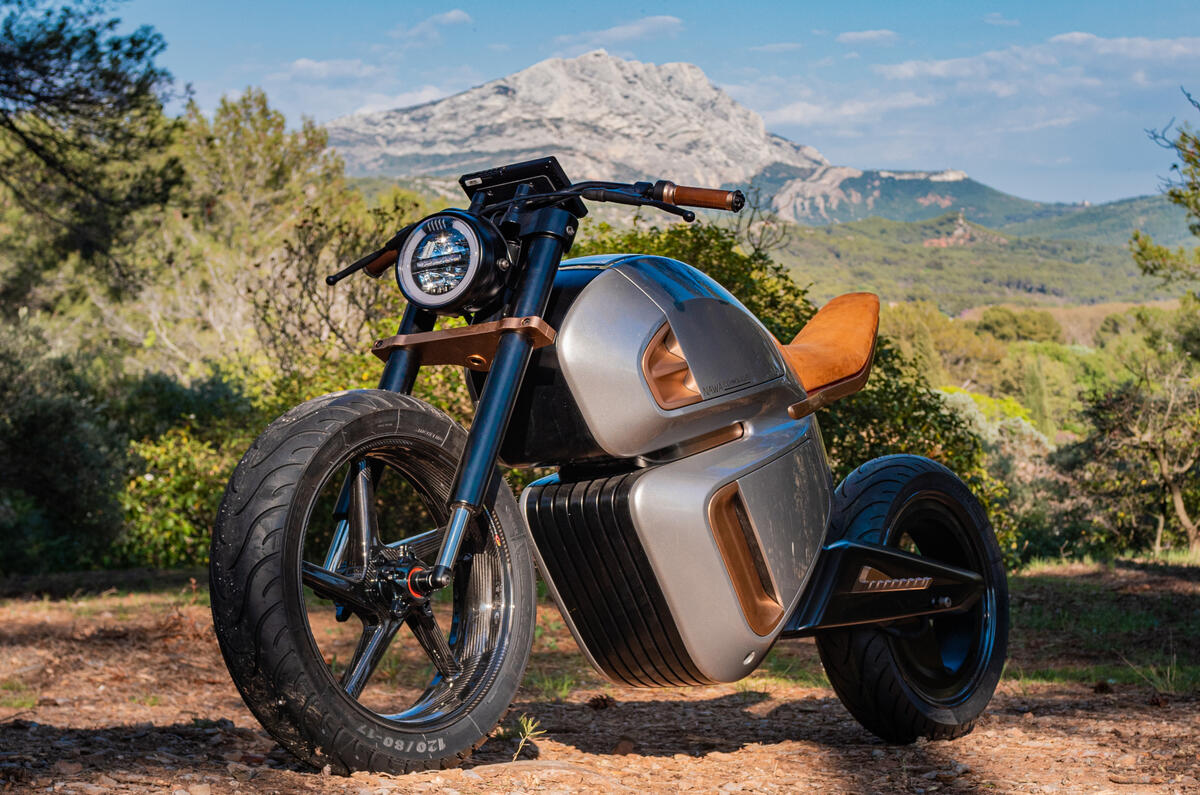An all-new electric motorcycle has been unveiled and uses what its makers call a "revolutionary electric powertrain" to achieve 186 miles of range.
The Racer, built by Nawa Technologies, is a zero-emissions bike concept. You can read the full story on the Move Electric website.
READ MORE
e-CARS
e-BIKES
e-MOTORBIKES
e-SCOOTERS




Join the debate
Add your comment
Better range than my much-loved Kawasaki Z1R, so makes a case for an EV bike.
Looks good too, so drop the price a bit and I'll have one on the drive please.
Fortnine did a mostly technically accurate video on youtube as to why a full sized electric motorbike hasn't worked.
Simple reason is that as any motorcyclist will tell you bikes aren't that fuel efficient, generally having similar mpg as a car of equivilent power. While an EV has 2 tonnes of mass to hide the battery an electric bike has 250kg. You then add in the demand to have a high power output relative to the battery size and you have an expensive engineering problem which you have to solve in a limited budget as you can't easily price a motorbike like you can a Model S nor will it sell in high numbers.
You then add in the question of who will buy them, the person will need to have a large disposable income to be able to afford a £30k toy, live in a city for the range to be acceptable, have somewhere off road to charge it, be interested in technology and environmentalism and also have an unfulfilled desire to compete in power sports....
Electric bike are already the worlds best selling EV, they just tend to be based on pedle cycles or scooters and have tiny power outputs and low prices.
Totally content-free press release. Exactly how does the ultracapacitor work, and what advantage does it offer?
Well the article isn't just content free it is misleading in its description of the properties of ultracapacitors (UCs)
UCs take in charge very quickly and can discharge very quickly - they have high power density not the high energy density suggested by "the greater energy storage capacity available in the UCs" element of the article.
High power density is obviously useful when charging and for harvesting energy during regen, as the UCs can gain energy very quickly without overheating. Their high discharge rate is usefull for hard acceleration, again without overheating. Thus a motorbike charging around a convoluted track or making its way through dense traffic would benfit immensly from these properties.
The logic is that UCs would allow a charging rate so rapid that doing it more frequently would not be an issue, especially in city environments with lots of chargers.
As far as I can can determine the energy density of Nawa UCs is around 30Wh per KG, which is a huge improvement on earlier capacitors. However the best available Li-ion batteries are 10 times more energy dense at 300Wh per KG. Thus the use of both UCs and Li-ion in the bike - UCs would not store enough energy, but by handling the high charge/discharge events they would greatly reduce deterioration of the Li-ion battery both in relation to the charge available and its life expectancy.
The power density of Li-ion batteries is around 400 watts/kg, for the UCs the measurements are in the 10s of kilowatts per kg up 100kW/kg plus. Thus orders of magnitude more power dense.
There is plenty of evidence that Autocar is often bamboozled by electric car technology!
That's exactly right, the article misses the whole concept of using an ultracapacitor and is very lightweight on facts. Like for instance it would be interesting to know the energy capacities of the battery and ultracapitor, weight of the machine and under what conditions the quoted range is achieved (my guess would be at a steady low speed!).